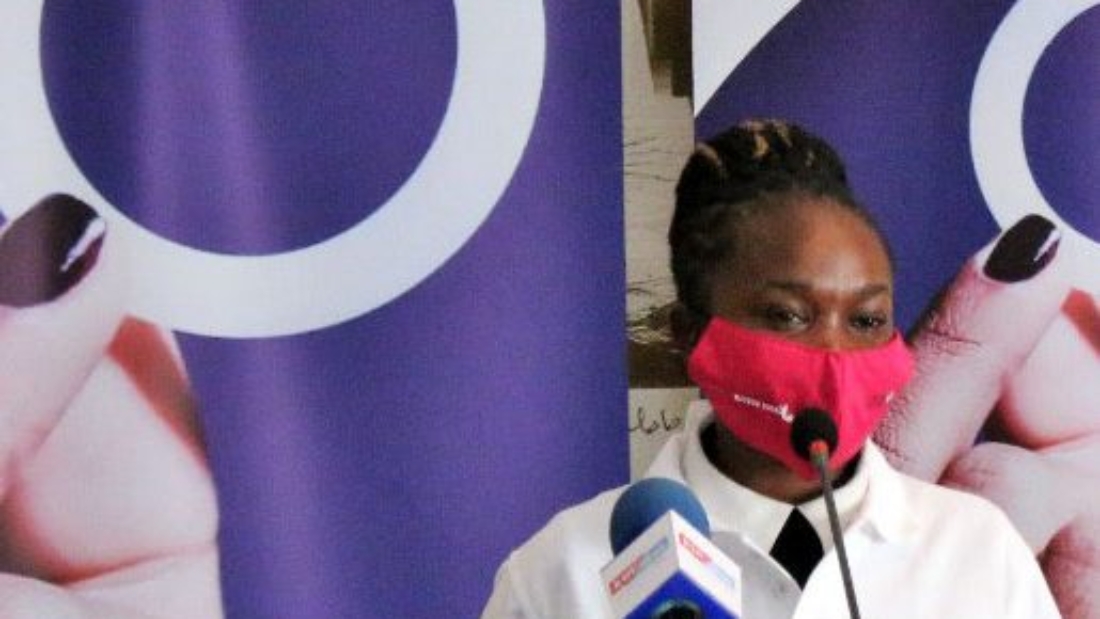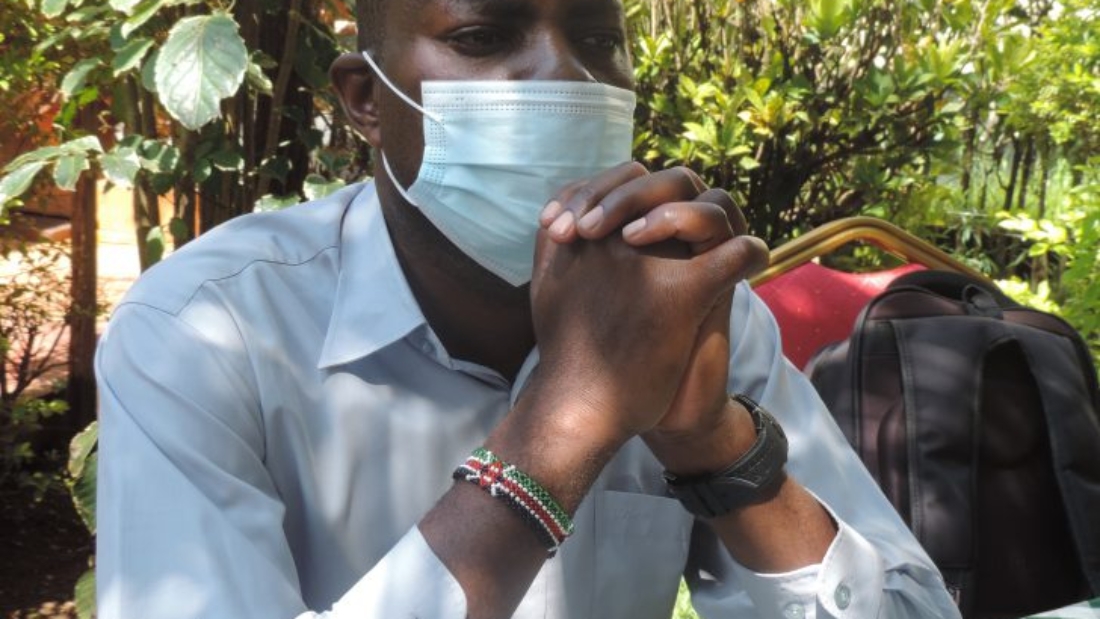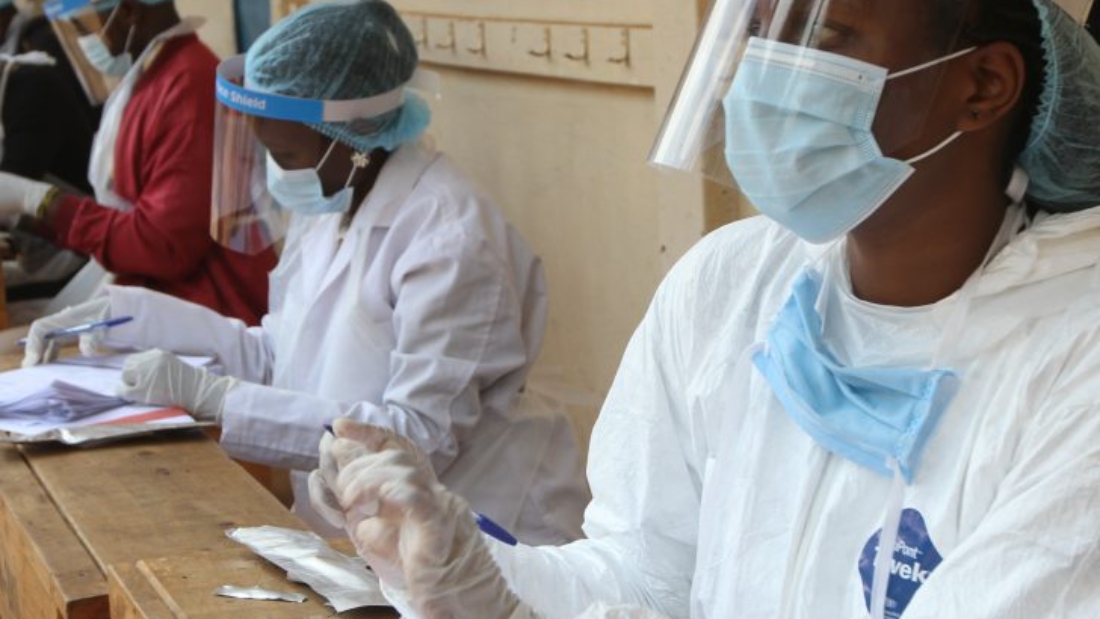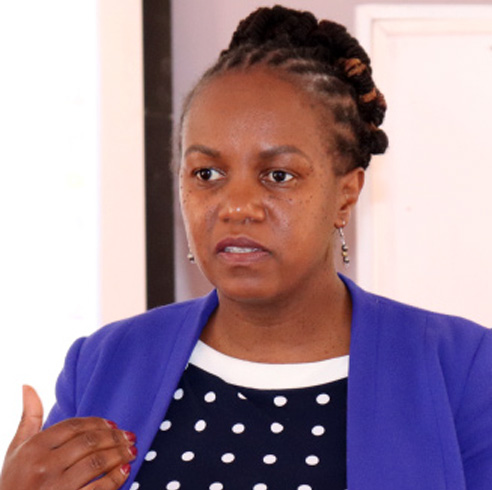By Darrel Bosire I info@meshascience.org
Africa could benefit from lower prices by participating in the ongoing COVID-19 vaccine development efforts, experts have said.
There could also be cost trade-offs for countries taking part in vaccine trials because they are co-investors or partners in the projects, says Dr Borna Nyaoke-Anoke, Manager, Clinical Trials at the Drugs for Neglected Diseases Initiative/Global Antibiotic Research and Development Partnership (DNDI/GARDP). Dr Nyaoke-Anoke said countries that opted out of vaccine trials will likely buy them at higher prices once they are developed.
“It does not make economic sense for pharmaceutical firms in the north that includes Europe and America, to test and develop a vaccine in their home countries at very high costs and then sell it here at a price similar to the one in their home countries. It is even harder to expect them to give discounted rates on the vaccines to African countries,” she said.
Dr Nyaoke-Anoke said the reasons pharmaceuticals prefer Africa for medicine and vaccine trials are purely scientific, and not racism. “Africa has the richest genetic variety and this makes it an ideal location for clinical trials involving vaccine and drug candidates.
That will result in more effective medicines and vaccines for people from the region and beyond,” she said. She was speaking at a recent virtual pre-conference hosted by the Media for Environment, Science, Health and Agriculture (MESHA), and attended by experts and science journalists from all over Africa.
Prof Kenneth Ngure, a lecturer at Jomo Kenyatta University of Agriculture and Technology (JKUAT), said Africa has scientific and moral reasons to participate in vaccine trials, so that when the vaccines are discovered the findings can also be generalizable to African populations.
Prof Ngure added that populations that participate in trials are usually the ones that are prioritized to receive the vaccines once they become available.
“We should avoid double speak. On the one hand we do not want to participate in vaccine trials and on the other we are demanding to get the vaccines,” he said.
“Remember most of the vaccines and drugs that we use in Africa today had the trials conducted in the west, it is only recently that Africa is getting more requests to conduct these studies because it has built its human, regulatory and infrastructural capacity.”
Dr Nyaoke-Anoke urged African countries to invest more in boosting research capacity in their labs as well as increasing the number of testing sites to attract interest from pharmaceutical firms developing vaccines and medications for various medical conditions.
She said not all medicines and vaccines developed in foreign countries were as effective for local populations, adding that the only way for African nations to overcome this was to take part in the research using local volunteers.
Data from the website www. clinicaltrials.org shows that there are 166 COVID-19 trials taking place in Africa, as compared to 710 in the United States alone, and 107 in Canada. South America has 162, China 60 and India 181.
Out of the 1,056 COVID-19 drug trials going on globally, DNDI indicates that Africa is the site for 56 trials. Uganda, Kenya and DRC are currently participating in trials for one drug each, as compared to Egypt with 36 trials, and South Africa with eight. Dr Nyaoke-Anoke rooted for more funding for research efforts into medication and vaccines on the continent.
“There is a real and urgent need for governments and other stakeholders in the continent to increase funding for research so that they can benefit from credible data from such efforts on home soil. By becoming partners in the research, it will put them in a good position to access drugs and vaccines developed specifically for their populations’ genetic makeup,” said the researcher and academic.
all are visited by tourists, so they are all potentially at risk. Apart from the more solitary orangutans, all species of great apes are highly sociable, living in close-knit social groups with physical interactions between them such as grooming and play occurring throughout large parts of every day. Transmission of any disease would Dr Nyaoke rooted for more funding for research efforts into medication and vaccines on the continent.
“There is a real and urgent need for governments and other stakeholders in the continent to increase funding for research so that they can benefit from credible data from such efforts on home soil. By becoming partners in the research, it will put them in a good position to access drugs and vaccines developed specifically for their populations’ genetic makeup,” said the researcher and academic.
Responding to a question on why pharmaceuticals preferred Africa as a location for medicine and vaccine trials, Dr Nyaoke said science, and not racism, was the real reason for the choice.
“Africa has the richest genetic variety and this makes ideal location for clinical trials involving vaccine and drug candidates. Even though a few insensitive statements have created the impression in people’s minds that Africans are perhaps viewed as guinea pigs in some quarters, the main goal of the trials is to get comprehensive data from the wide genetic variations in the African populations. That will result in more effective medicines and vaccines for people from the region and beyond,” she said.
“Most trials are taking part in high-income countries. Very few trials are planned in Africa, South Africa, Central and South America, South and Southeast Asia.
Dr Nyaoke said many of the trials currently taking place are too small to be conclusive.
“COVID-19 trials need to be large, well designed and adequately powered to generate authoritative, concrete evidence,” said Dr Nyaoke.
She lamented that “research to date has mainly been focused on advanced cases of the disease while COVID-19 cases in Africa have mainly been mild.”
Dr Nyaoke said the trials should look into better ways to care for patients in view of the worryingly low levels of ICU and hospital bed capacity on the continent.
“Limited hospital and ICU bed capacity and exposure of health workers require urgent investigation. Large, well-conducted clinical trials are urgently needed to support guidelines on prevention and clinical management in resource poor settings,” she said.
According to Dr Vincent Muturi-Kioi, a medical director at the International AIDS Vaccine (iavi), different people will respond differently to drugs and vaccines because of many factors including human genetics and environmental exposures.
For scientists to develop vaccines and other biomedical products that are optimized for African populations and are meant to address public health problems that may disproportionately affect people in Africa and other low-income regions of the world, it is important that the clinical trials provide data which accurately represents the way these products work in the target populations.








 The trials that are on-going include Imbokodo (Phase 2B/3) trial HVTN 705 which is a Mosaic Vaccine Aiming at Protection Against wide variety of global HIV strains. Dr Kundai said that HVTN 705 is a trial in women in five African countries of South Africa, Malawi, Zambia, Zimbabwe and Mozambique. The trial results are expected in 2022. Besides, up next is the PrEPVacc Trial Phase 2b trial which is testing 2 vaccines regimens to prevent HIV infection and compare a new kind of daily pill for pre-exposure prophylaxis (PrEP), Descovy vs the currently used Truvada. Importantly, this trial tests 2 vaccines regimens to prevent HIV infection and compare a new kind of daily pill for pre-exposure prophylaxis (PrEP), Descovy vs the currently used Truvada. Dr Kundai told us that this is the first efficacy vaccine trial that includes daily oral PrEP in its design in both men and women.
The trials that are on-going include Imbokodo (Phase 2B/3) trial HVTN 705 which is a Mosaic Vaccine Aiming at Protection Against wide variety of global HIV strains. Dr Kundai said that HVTN 705 is a trial in women in five African countries of South Africa, Malawi, Zambia, Zimbabwe and Mozambique. The trial results are expected in 2022. Besides, up next is the PrEPVacc Trial Phase 2b trial which is testing 2 vaccines regimens to prevent HIV infection and compare a new kind of daily pill for pre-exposure prophylaxis (PrEP), Descovy vs the currently used Truvada. Importantly, this trial tests 2 vaccines regimens to prevent HIV infection and compare a new kind of daily pill for pre-exposure prophylaxis (PrEP), Descovy vs the currently used Truvada. Dr Kundai told us that this is the first efficacy vaccine trial that includes daily oral PrEP in its design in both men and women.